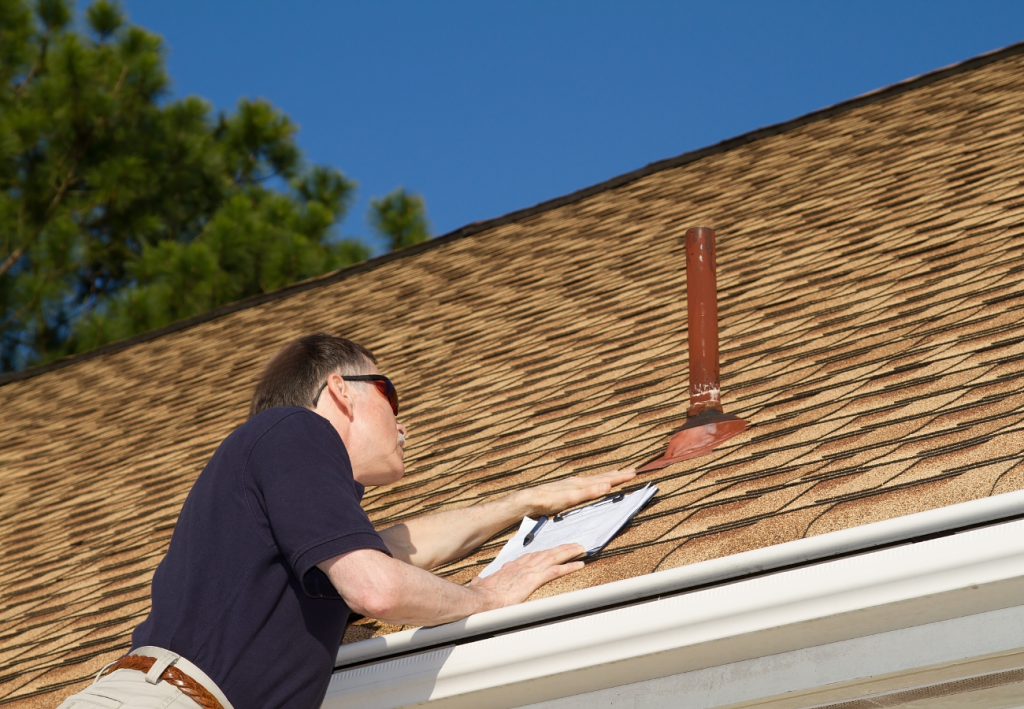Introduction
A building inspection is a crucial step for any property investor. It involves a comprehensive evaluation of a property’s condition, ensuring it meets all safety standards and building codes. With potential investments often representing significant financial commitments, understanding the true state of a property is essential.
During a building inspection, professionals assess various aspects:
- Structural integrity
- Electrical systems
- Plumbing
- Roofing
These inspections help investors identify hidden problems that could affect the property’s value or suitability.
This article covers:
- The role of building inspections in property investment
- Detailed steps involved in the building inspection process
- Benefits of professional building inspections for property investors
Understanding these elements can make a significant difference in your investment decisions, ensuring you are well-informed and prepared.
In addition to these aspects, it’s also important to consider other specialised inspections such as pest inspections which can uncover potential pest-related issues that may not be immediately apparent during a general building inspection. These additional assessments are particularly important in areas prone to specific pests or where previous infestations have been recorded.
By conducting thorough inspections, like those offered by One Stop Inspections, property investors can gain a comprehensive understanding of the property’s condition, allowing them to make informed decisions about their investments and potentially avoid costly surprises down the line.
The Role of Building Inspections in Property Investment
A building inspection is crucial for property investors as it helps uncover hidden problems that can greatly impact a property’s value or suitability. By being aware of potential risks beforehand, you can avoid costly surprises in the future.
Identifying Potential Issues and Ensuring Safety
How Building Inspections Help:
- Unveil hidden problems that could affect a property’s value or suitability
- Highlight potential risks before making a purchase
- Save you from costly surprises down the line
Key Areas Examined for Safety Concerns:
- Foundation and Structural Integrity: Inspectors check for cracks, uneven floors, and other signs of structural weaknesses.
- Roof Condition: Roof inspections are vital for spotting leaks, missing shingles, or structural damage.
- Electrical Systems: Faulty wiring poses fire hazards.
- Plumbing Systems: Leaks, corroded pipes, and poor water pressure are some of the common issues identified during plumbing inspections.
- HVAC Systems: Heating, ventilation, and air conditioning systems are assessed for efficiency and safety.
- Pest Infestation: Termites, rodents, and other pests can compromise the structural integrity of a building.
By identifying these issues early on through comprehensive building inspections, you can make informed decisions about whether to proceed with the investment or negotiate repairs with the seller.
Assessing Quality and Compliance with Regulations
Building inspections also play a crucial role in evaluating the overall quality of construction workmanship and materials used. Quality assessments ensure that you’re investing in a property built to last.
Evaluating Construction Quality:
- Materials Used: Inspectors assess the quality of materials used in construction—from bricks and mortar to windows and doors.
- Workmanship: Attention to detail in construction is essential for both aesthetics and durability.
Compliance with building codes and regulations is another important aspect of property inspections. Properties that do not meet these standards may require expensive upgrades or may not be insurable.
Checking Compliance:
- Building Codes: Inspectors verify that the property adheres to local building codes covering aspects like structural integrity, electrical systems, plumbing, and fire safety.
- Permit Verification: Part of ensuring compliance involves checking whether all necessary permits were obtained during construction or renovation phases.
- Environmental Regulations: In some areas, properties must comply with environmental laws concerning waste disposal, energy efficiency, and more.
Benefits Beyond Safety
Professional building inspections provide benefits beyond identifying immediate safety concerns:
- They offer peace of mind by confirming that your investment is sound.
- They provide leverage during negotiations.
By understanding these key roles that building inspections play in property investment—identifying potential issues, ensuring safety, assessing quality, and checking compliance—you equip yourself with invaluable information that helps protect your investment. Additionally, pool safety inspections are also crucial in certain areas as they ensure compliance with local regulations and guarantee the safety of occupants.
Assessing Quality and Compliance with Regulations
When it comes to property investment, it’s crucial to know if a potential purchase is up to standard and follows the rules. This is where building inspections come in handy. They help evaluate the quality of a property and ensure it complies with regulations, giving investors the information they need to make smart decisions.
Evaluating the Overall Quality of Construction
During a building inspection, the inspector carefully examines different aspects to gauge how well the property is built:
- Workmanship: Inspectors assess the skill and care put into constructing the property. They look at things like finishes, fittings, and fixtures to make sure they meet industry standards.
- Materials Used: The type and quality of materials used in construction are important factors. Inspectors check if high-quality materials were used or if there are any signs of cheap materials that could affect the building’s stability.
For example, an inspector might point out poorly done tiles or subpar drywall installations as warning signs, which could indicate larger problems with the construction quality.
Ensuring Compliance with Building Codes and Regulations
Following local building codes and regulations is another key aspect of a building inspection. These codes exist to promote safety, accessibility, and sustainability.
- Code Adherence: Inspectors make sure that the property meets all relevant building codes. This includes things like structural requirements, fire safety standards, electrical systems, plumbing guidelines, and more.
- Permits and Documents: They also verify if there are any necessary permits and paperwork in place. This ensures that all construction work has been officially approved and inspected by the appropriate authorities.
For example, a property might have made changes such as adding a new room or deck. Inspectors will check if these additions follow current regulations and if proper permits were obtained.
By looking at both quality and compliance, inspections uncover possible problems that could impact a property’s value or its suitability for investment. This thorough evaluation plays a significant role in successful property investment by giving an unbiased assessment of the property’s condition.
For those who are thinking about investing in properties, understanding the importance of these assessments can save you time, money, and future troubles. Building inspections do more than just find issues; they paint a detailed picture of what you’re putting your money into.
The Building Inspection Process Explained
Step 1: Initial Assessment and Site Visit
Conducting a thorough visual examination during the initial site visit is crucial. This first step in the building inspection process allows inspectors to identify any visible signs of damage or other immediate concerns. Here’s what you need to know:
Interior Examination:
Inspectors meticulously check for issues such as:
- Cracks in walls or ceilings
- Water stains indicating possible leaks
- Signs of mold or mildew
- Faulty electrical outlets and switches
Exterior Examination:
The exterior is equally scrutinised to ensure structural integrity and safety. Inspectors will look for:
- Cracks in the foundation or walls
- Roof damage like missing shingles or tiles
- Proper drainage and grading around the property
- Condition of windows and doors, checking for gaps or rot
A comprehensive visual assessment helps catch evident problems early on, allowing investors to gauge the property’s immediate condition.
Identifying Visible Signs of Damage
Visible signs of damage provide critical clues about a property’s health. Key indicators include:
- Cracks: These can signify foundational issues which may affect the stability of the entire structure.
- Water Stains: Often found on ceilings, walls, or floors, water stains can indicate roof leaks, plumbing issues, or poor waterproofing.
- Mold and Mildew: Presence of mold not only damages the property but also poses health risks. It often points to moisture problems.
- Electrical Issues: Outdated or damaged wiring can be a fire hazard. Loose outlets and flickering lights are common red flags.
Inspectors use their expertise to differentiate between minor cosmetic flaws and serious structural concerns.
Understanding these initial steps sets the stage for a deeper evaluation in subsequent phases of the building inspection process.
Step 2: In-Depth Evaluation of Structural Components
Ensuring the structural integrity of a property is crucial in the building inspection process. During this step, inspectors delve into the stability and strength of critical components such as the foundation, walls, and roof structure.
Foundation Assessment
A solid foundation is essential for any building. Inspectors use various techniques to evaluate its condition:
- Visual Examination: Looking for visible cracks, uneven settling, and water damage.
- Probing Tools: Using tools like rebar locators to detect hidden issues within the concrete.
- Load Testing: Applying pressure to assess how well the foundation can handle weight without shifting or cracking.
Wall Integrity Check
The walls are vital for maintaining the structural soundness of a building. Inspectors check for:
- Cracks and Gaps: Identifying any fissures that could indicate underlying problems.
- Water Damage: Searching for signs of dampness or mold that may weaken wall materials.
- Material Quality: Ensuring bricks, cement, or other materials meet safety standards.
Roof Structure Evaluation
The roof protects a property from external elements. A thorough inspection involves:
- Roof Covering Examination: Checking shingles, tiles, or other materials for wear and tear.
- Structural Support Inspection: Assessing beams and trusses for potential weaknesses.
- Leak Detection: Using infrared cameras to spot unseen leaks that could compromise structural integrity.
By meticulously examining these components, inspectors provide a detailed evaluation of a property’s structural health. This step ensures that potential issues are identified early, offering property investors peace of mind and safeguarding their investments.
Step 3: Testing Electrical, Plumbing, and Roofing Systems
Evaluating the functionality and condition of key systems in a property is critical during a building inspection. These systems include electrical wiring, plumbing pipelines, and the roof covering. Each system plays an integral role in ensuring the property’s safety, habitability, and long-term value.
Electrical Systems Assessment
Inspectors begin by examining the electrical system to ensure it meets current safety standards and functions properly. Key elements they check include:
- Wiring and Circuitry: Inspectors look for outdated or damaged wiring that could pose a fire hazard. They verify if the wiring is aluminum or copper, as older aluminum wiring may need replacement.
- Electrical Panels: The main service panel and sub-panels are inspected for proper labeling, appropriate sizing of breakers, and overall condition.
- Outlets and Switches: Random sampling of outlets and switches ensures they are correctly wired and grounded. GFCI (Ground Fault Circuit Interrupter) outlets are checked in areas like kitchens and bathrooms to enhance safety.
- Lighting Fixtures: Proper installation and function of lighting fixtures are verified to prevent electrical mishaps.
Plumbing Assessment
A thorough plumbing assessment ensures that all plumbing components operate efficiently without leaks or other issues. Key aspects include:
- Pipelines: Inspectors examine water supply lines for leaks, corrosion, or outdated materials such as lead pipes that may require replacement.
- Water Heaters: The condition, age, and capacity of water heaters are evaluated to ensure they meet the needs of the property while operating safely.
- Fixtures: Faucets, toilets, showers, and bathtubs are tested for proper function. Low water pressure or slow drainage may indicate underlying plumbing problems.
- Sewage Systems: If applicable, inspectors check septic tanks or sewer connections for any signs of malfunction or required maintenance.
Roofing Assessment
The roof’s condition is vital as it protects the entire structure from weather-related damage. Inspectors focus on several key factors:
- Roof Covering: Materials like shingles, tiles, or metal panels are examined for wear and tear. Missing or damaged pieces can lead to leaks and require immediate attention.
- Flashing: Areas around chimneys, vents, skylights, and other roof penetrations are checked for properly installed flashing to prevent water ingress.
- Gutters and Downspouts: These components are inspected to ensure they effectively channel water away from the property’s foundation. Blockages or damage can cause significant issues over time.
- Structural Integrity: The roof’s overall structure is assessed for sagging or other signs of stress that might indicate potential failure points.
By meticulously evaluating these critical systems during the building inspection process, you can identify potential issues early on. This step not only ensures the property’s current safety but also helps maintain its value over time.
Benefits of Professional Building Inspections for Property Investors
Professional building inspections offer several benefits for property investors. One of the main advantages is the ability to minimise risks and avoid costly surprises. By conducting thorough inspections, investors can:
1. Identify Hidden Problems Early On
Issues like mold, pest infestations, or structural weaknesses are often not visible to the untrained eye. Professional inspectors use their expertise to uncover these hidden issues before they become major headaches.
Example: An inspector might find termite damage in a property’s wooden structure. Catching this early means you can negotiate repairs or reconsider your investment.
2. Engage in Preventative Maintenance
By identifying problems early, you can engage in preventative maintenance rather than reactive repairs. This proactive approach not only saves money but also extends the life of property components.
Example: Early detection of minor roof leaks allows for timely repairs before water damage spreads and necessitates more extensive roofing work.
3. Assess the Long-Term Viability of a Property
Knowing about potential issues upfront helps determine whether a property will be a viable investment in the long run. Comprehensive inspections provide a clear picture of what to expect regarding maintenance and repairs.
Example: If an inspection reveals outdated electrical wiring, you can plan for an upgrade to ensure tenant safety and compliance with modern standards.
4. Ensure Safety for Tenants and Owners
Ensuring that a property meets current safety standards protects both tenants and owners from potential hazards. Inspections cover critical areas such as electrical systems, plumbing, and structural integrity, ensuring that all elements are safe and functional.
Example: Detecting faulty wiring that could lead to electrical fires ensures that necessary repairs are made, safeguarding lives and property.
5. Negotiate Better Deals Based on Inspection Findings
Inspection findings serve as powerful tools during negotiations. Subpar inspection results allow you to negotiate a lower purchase price or request the seller to make necessary repairs before closing the deal.
Example: If an inspection uncovers significant foundation issues, you can use this information to justify a reduction in the asking price or demand seller-funded repairs.
6. Meet Insurance Requirements
Building inspections also play a crucial role in satisfying insurance company requirements. Insurers often need to assess the risk level associated with insuring a particular property. Meeting these requirements ensures smooth coverage and prevents potential disputes down the line.
Example: An insurer might mandate replacing old electrical panels before issuing a policy, based on inspection findings highlighting potential fire hazards.
Overall, professional building inspections provide property investors with valuable insights, protection, and opportunities for better decision-making.
Negotiating Better Deals Based on Inspection Findings
Professional inspections provide valuable information for investors, not just about potential problems but also as a tool for negotiation. Here’s how you can use inspection findings to your advantage when discussing the terms of a deal:
1. Use Objective Evidence in Negotiations
Armed with a detailed inspection report, you have concrete evidence of the property’s condition that can support your position in negotiations. Instead of relying on subjective opinions or assumptions, you can refer to specific issues identified in the report:
- Highlighting structural defects, outdated electrical systems, or plumbing issues that require attention
- Pointing out the cost involved in fixing these problems
By presenting this objective evidence, you can make a stronger case for why the seller should consider your proposed changes to the deal.
2. Seek Financial Concessions for Repairs
If the inspection reveals significant repairs that need to be done, you can negotiate for financial concessions to cover these costs. Here are two possible approaches:
- Request a lower purchase price: By estimating the cost of repairs and proposing a reduction in the asking price equivalent to that amount, you can ensure that you’re not overpaying for a property with existing issues.
- Ask the seller to make repairs: Alternatively, you can negotiate for the seller to take responsibility for fixing the problems before the sale is finalised. This way, you won’t have to worry about coordinating repairs yourself or dealing with any potential complications that may arise.
Both options allow you to address necessary repairs while protecting your financial interests as an investor.
3. Consider Long-Term Value vs. Repair Costs
In some cases, inspection findings may reveal issues that aren’t immediate deal-breakers but could impact the long-term value of the property. When weighing whether to proceed with the purchase or renegotiate the terms, it’s essential to consider:
- The estimated cost of future repairs or renovations
- How these expenses could affect the overall profitability of your investment
By factoring in these potential costs, you can make a more informed decision about whether the property’s current price aligns with its actual value.
4. Leverage Multiple Property Options
If you’re considering multiple properties, inspection reports can provide valuable insights for comparison. Instead of relying solely on visual impressions or seller disclosures, you can use factual data from inspections to evaluate:
- The condition of each property
- The potential scope of repairs or upgrades needed
- How these factors may impact the overall investment opportunity
This comparative analysis allows you to prioritise your choices based on objective criteria and negotiate accordingly.
5. Addressing Insurance Requirements
Apart from aiding negotiations, inspections also play a role in meeting insurance company requirements. Insurers often assess properties to determine risk levels and set policy terms accordingly. By having a professional inspection conducted, you can:
- Provide insurers with reliable information about the property’s condition
- Demonstrate your commitment to maintaining a safe and insurable investment
This proactive approach helps ensure that you can secure suitable insurance coverage for your property while minimising any potential issues during the application process.
Remember, conducting professional building inspections is not just about ticking off a checklist—it’s an essential step towards making well-informed investment decisions and protecting your financial interests as a property investor.
Ensuring Insurance Requirements are Met
When investing in property, it’s crucial to meet insurance requirements to manage risks effectively. Insurers usually require a building inspection to assess the risk level of insuring a specific property. This evaluation determines if the property can be insured and the cost of premiums.
Key Benefits of Professional Inspections for Investors:
- Risk Mitigation: Professional building inspections provide detailed insights into a property’s condition. This helps investors identify potential risks that could affect insurance coverage.
- Avoiding Surprises: Comprehensive inspections reveal hidden issues that might not be obvious during a quick look around. This allows investors to address problems before finalising an insurance policy.
- Compliance with Insurance Standards: Meeting the requirements set by insurance companies ensures that the property is adequately covered, protecting the investor’s financial interests.
Understanding Insurance Requirements:
Insurance companies often have strict criteria for assessing a property’s risk level. They consider several factors during an inspection:
- Structural Integrity: Inspectors evaluate the foundation, walls, roof, and other structural components to ensure they meet safety and quality standards.
- Electrical Systems: Proper functioning and compliance with electrical codes are essential to prevent fire hazards and ensure safety.
- Plumbing Systems: Adequate plumbing reduces the risk of water damage, which can lead to costly repairs and higher insurance claims.
- Fire Safety Measures: Smoke detectors, fire alarms, and sprinkler systems are assessed to ensure they meet regulatory requirements.
How Investors Can Minimise Risks and Avoid Costly Surprises:
Investors can take proactive steps to minimise risks by:
- Scheduling professional building inspections before purchasing a property.
- Reviewing detailed inspection reports to understand any potential issues.
- Addressing identified problems promptly to meet insurance standards.
Negotiating Better Deals and Ensuring Insurance Compliance:
Negative inspection findings can be used to negotiate better deals. For instance:
- Investors can request repairs from sellers before closing the deal.
- A reduction in purchase price may be negotiated based on inspection results.
Having a professional inspection report provides objective evidence of a property’s condition, which is invaluable when negotiating with sellers or insurers. It ensures transparency and helps investors make informed decisions about the true market value of a property.
Meeting insurance requirements through thorough building inspections not only helps in securing adequate coverage but also builds confidence in the investment’s long-term viability. It underscores the importance of professional inspections for safeguarding both financial investments and physical assets.
Conclusion
Prioritising a professional building inspection is crucial for every property investor. It offers a comprehensive understanding of the property’s condition, ensuring that you make informed decisions. Identifying hidden problems early can save thousands in future repairs and protect your investment from unforeseen issues.
Key benefits include:
- Minimising Risks: Spot potential structural or system failures before they escalate.
- Informed Negotiations: Use inspection findings as leverage during price negotiations.
- Insurance Compliance: Meet insurer requirements to avoid coverage issues.
Without a thorough inspection, you risk purchasing a property with underlying issues that could compromise safety and financial returns. Investing in a professional building inspection is not just a precaution—it’s a smart strategy for securing your investment’s longevity and profitability.
Frequently Asked Questions
Building inspections play a crucial role in property investment by helping investors identify potential issues and ensure the safety, quality, and compliance of a property before making a purchase decision. They provide valuable insights that can mitigate risks and avoid costly surprises in the future.
Thorough inspections help investors identify hidden problems by examining specific areas of a property for safety concerns, structural integrity, and the functionality and condition of key systems such as electrical, plumbing, and roofing. This process allows investors to make informed decisions about a property’s true market value and suitability.
A comprehensive building inspection involves an initial assessment and site visit, followed by an in-depth evaluation of structural components and testing of electrical, plumbing, and roofing systems. Each step of the process is designed to provide a thorough understanding of a property’s condition and compliance with regulations.
Professional building inspections benefit property investors by minimising risks, avoiding costly surprises, and providing objective evidence of a property’s condition. They also enable investors to negotiate better deals based on inspection findings and ensure compliance with insurance requirements.
Investors can leverage negative inspection results to negotiate for a lower purchase price or request that the seller carry out necessary repairs prior to closing the deal. A professional inspection report provides objective evidence that can assist investors in making informed decisions about a property’s true market value.
Every property investor should prioritise getting a professional building inspection done before making a purchase decision because it helps identify potential issues early on, mitigates risks, avoids unexpected financial burdens, enables negotiation for better deals, and ensures compliance with insurance requirements.
Subscribe To Our Newsletter
Get updates and learn from the best
More To Explore

Common Issues Found by Private Building Inspectors in Adelaide
Investing in property is one of the most significant financial decisions you’ll ever make, and ensuring it’s a sound investment starts with a thorough inspection. Private building inspectors in Adelaide act as your trusted allies, uncovering hidden issues that could impact the safety, value, and longevity of your property. From structural defects and pest infestations

Why Hiring a Residential Building Inspector is Crucial for Homebuyers
Buying a home is a major investment—probably one of the most significant financial decisions of your life. While a property may appear flawless on the surface, hidden defects and structural issues could turn your dream home into a financial nightmare. From foundation cracks to electrical hazards, unnoticed problems can lead to costly repairs down the


